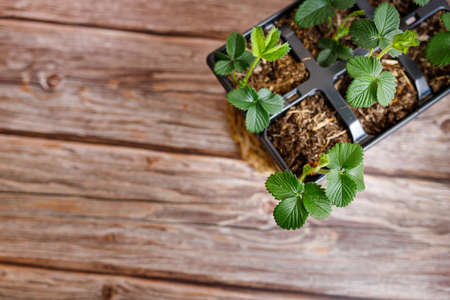1. Choosing the Right Houseplants for Your Home
Picking the perfect houseplants starts with understanding your home’s environment and your personal lifestyle. Not all plants thrive in the same conditions, so it’s important to match the right plant to the right space. Here’s how to make smart choices that will set you and your indoor garden up for success.
Consider Your Home’s Lighting
Light is one of the most critical factors when choosing houseplants. Some plants love bright, direct sunlight, while others prefer low-light corners. Before buying a plant, take note of how much natural light different areas of your home receive throughout the day.
| Light Condition | Ideal Plant Types |
|---|---|
| Bright, Direct Light (e.g., near south-facing windows) | Cacti, Succulents, Fiddle Leaf Fig |
| Bright, Indirect Light (e.g., near east or west-facing windows) | Pothos, Monstera, Peace Lily |
| Low Light (e.g., rooms with few or small windows) | Snake Plant, ZZ Plant, Cast Iron Plant |
Think About Humidity Levels
Humidity plays a big role in plant health. Tropical plants usually need higher humidity levels, while desert plants like succulents prefer drier air. Bathrooms and kitchens tend to be more humid, making them great spots for moisture-loving plants.
Plant Suggestions Based on Humidity
- High Humidity: Ferns, Calatheas, Orchids
- Moderate Humidity: Spider Plant, Philodendron, Rubber Plant
- Low Humidity: Aloe Vera, Jade Plant, Snake Plant
Match Plants to Your Space and Lifestyle
If you have limited room or live in an apartment, opt for compact or hanging plants that don’t take up much space. Also think about how much time you can realistically spend caring for your plants. Some are low-maintenance and forgiving if you forget to water them occasionally.
Lifestyle and Experience Level Guide
| Lifestyle/Experience Level | Recommended Plants |
|---|---|
| Busy Schedule/Newbie Gardener | Pothos, Snake Plant, ZZ Plant |
| Avid Gardener/Has Time to Care for Plants | Bonsai Tree, Fiddle Leaf Fig, Calathea |
| Pets at Home* | Bamboo Palm, Areca Palm (avoid toxic plants like lilies and pothos) |
*Always double-check whether a plant is toxic to pets by referring to resources like ASPCAs list of toxic and non-toxic plants.
Your Ideal Indoor Garden Starts with Smart Choices
Selecting houseplants that match your homes lighting, humidity levels, available space, and your own lifestyle is key to creating a thriving indoor garden. With a little planning upfront, youll enjoy healthier plants and a greener home environment.
2. Creating the Ideal Indoor Environment
To help your houseplants not just survive but truly thrive indoors, it’s important to recreate the natural conditions they would experience in their native habitats. This means paying close attention to light, temperature, and humidity—three key environmental factors that directly impact plant health.
Lighting: Getting It Just Right
Different plants have different light needs, so understanding what kind of light each plant prefers is crucial. Here’s a quick guide to common lighting categories:
| Light Level | Description | Ideal Plant Types |
|---|---|---|
| Bright Indirect Light | Lots of light but not direct sunrays; near east or north-facing windows | Peace Lily, Pothos, Snake Plant |
| Direct Sunlight | Unfiltered sunlight for several hours a day; south or west-facing windows | Cactus, Succulents, Fiddle Leaf Fig |
| Low Light | Little to no natural sunlight; corners or rooms with minimal windows | ZZ Plant, Cast Iron Plant, Chinese Evergreen |
Temperature: Keeping It Consistent
Most houseplants prefer the same indoor temperatures we do—between 65°F and 75°F during the day and slightly cooler at night. Avoid placing your plants near drafty windows, radiators, or air conditioning vents where temperatures can fluctuate dramatically. Sudden changes can stress your plants and stunt their growth.
Pro Tip:
If you’re comfortable in a room wearing a T-shirt, your plant probably is too!
Humidity: Mimicking Moisture Levels
Many popular houseplants come from tropical regions and need higher humidity levels than are typically found in most American homes—especially during winter when indoor heating dries out the air.
Ways to Boost Humidity:
- Misting: Lightly mist leaves with water every few days (but avoid overdoing it).
- Humidifier: Use a small humidifier in the room where your plants live.
- Pebble Tray: Place a tray filled with water and pebbles under your plant pot (make sure the pot isn’t sitting directly in water).
- Group Plants Together: Plants release moisture through transpiration—grouping them helps create a mini microclimate.
The Bottom Line on Indoor Conditions
The better you simulate your plants natural environment indoors, the healthier and happier it will be. Pay attention to how much light it gets throughout the day, keep temperatures steady, and don’t forget about humidity—especially if you live in a dry climate or use central heating.
![]()
3. Soil, Potting, and Repotting Essentials
Healthy houseplants start with the right foundation—soil and pots. Choosing the correct soil type, selecting suitable containers, and knowing when and how to repot are all key to helping your indoor plants thrive.
Choosing the Right Soil for Your Houseplants
Not all houseplants have the same soil needs. Some love moisture, while others prefer dry, well-drained conditions. Using the wrong soil can lead to poor growth or even root rot. Heres a quick guide to help you pick the best soil mix:
| Plant Type | Recommended Soil Type |
|---|---|
| Succulents & Cacti | Well-draining cactus mix with sand or perlite |
| Tropical Plants (e.g., Monstera, Philodendron) | Rich, peat-based mix with good drainage |
| African Violets | Light, airy potting mix with added vermiculite |
| Orchids | Chunky bark-based orchid mix for air circulation |
| Ferns & Moisture-Loving Plants | Moisture-retentive soil with compost or coco coir |
Selecting the Best Pots for Indoor Plants
The right pot isn’t just about looks—it helps keep your plant healthy by providing proper drainage and space for roots to grow. Here are some tips on choosing pots:
- Drainage Holes: Always choose pots with drainage holes to prevent water from sitting at the bottom and causing root rot.
- Material Matters: Terracotta is breathable and great for succulents; plastic holds moisture longer and is lighter; ceramic adds style but may retain more water.
- Size Appropriately: Use a pot that’s only 1–2 inches larger in diameter than your plant’s current container to avoid overwatering issues.
When to Repot Your Houseplants
Repotting doesn’t always mean moving to a larger pot. Sometimes it’s just about refreshing old soil. Here are signs its time to repot:
- Roots are growing out of drainage holes or circling around inside the pot
- The plant dries out too quickly after watering
- You see stunted growth or yellowing leaves despite proper care
- The soil looks compacted or drains poorly
How to Repot Your Plant Step-by-Step:
- Water the Plant: Do this a few hours before repotting to make removal easier.
- Gently Remove It: Slide the plant out of its pot, supporting the base and roots.
- Loosen Roots: Tease apart any tangled roots gently; trim any dead or mushy ones.
- Add Fresh Soil: Place a layer of new potting mix in the bottom of the new pot.
- Place and Fill: Center your plant in the new pot and fill around it with fresh soil. Press down lightly to remove air pockets.
- Water Thoroughly: Let water drain fully and place the plant back in its usual spot.
A little attention to soil quality and proper potting goes a long way in keeping your indoor garden vibrant year-round!
4. Watering and Fertilizing Indoor Plants
Proper watering and fertilizing are essential for keeping your indoor plants happy and healthy. Too much or too little of either can lead to yellowing leaves, stunted growth, or even root rot. Let’s break down how to water correctly and feed your plants the nutrients they need to thrive.
Understanding Your Plant’s Water Needs
Not all houseplants require the same amount of water. Some prefer consistently moist soil, while others thrive when their soil dries out between waterings. Here’s a general guide:
| Plant Type | Watering Frequency | Soil Condition |
|---|---|---|
| Cactus & Succulents | Every 2–3 weeks | Let soil dry out completely |
| Tropical Plants (e.g., Monstera, Pothos) | Once a week | Slightly moist, not soggy |
| Ferns & Calatheas | Twice a week | Keep consistently moist |
How to Avoid Overwatering
Overwatering is one of the most common mistakes in indoor plant care. Here are some tips to avoid it:
- Check before you water: Stick your finger about an inch into the soil. If it feels dry, its time to water.
- Use pots with drainage holes: This allows excess water to escape and prevents root rot.
- Empty saucers: Don’t let your plant sit in standing water.
The Right Way to Water
When watering, do so thoroughly until water runs out of the bottom of the pot. This ensures all roots get moisture and helps flush out any salt buildup from fertilizers.
Feeding Your Plants: Fertilizer Basics
Just like people need food, plants need nutrients to grow strong and vibrant. Fertilizers provide essential minerals that might be missing from potting soil over time.
Types of Fertilizers
| Type | Description | Best For |
|---|---|---|
| Liquid Fertilizer | Diluted in water and applied during watering. | Tropical foliage plants, flowering plants. |
| Slow-Release Pellets | Mixed into soil; release nutrients gradually over time. | Low-maintenance plant care. |
| Organic Options (e.g., compost tea, fish emulsion) | Naturally derived and eco-friendly. | Sensitive or edible indoor plants. |
When and How Often to Fertilize
- Spring & Summer: Fertilize once every 2–4 weeks when plants are actively growing.
- Fall & Winter: Reduce or stop feeding as most houseplants enter a dormant phase.
- Always read the label: Follow instructions carefully to avoid fertilizer burn.
A Healthy Routine Goes a Long Way
A consistent watering and fertilizing routine will help your houseplants grow lush and vibrant year-round. Keep an eye on their condition—yellow leaves or stunted growth can often be signs of too much or too little water or nutrients. With just a bit of attention, your indoor jungle will flourish!
5. Troubleshooting Common Problems
Even the most experienced plant parents run into issues from time to time. Whether its yellowing leaves, suspicious spots, or drooping stems, indoor houseplants can develop a range of problems. Don’t worry — most of these issues can be fixed with a little care and attention. Here’s how to identify and solve the most common houseplant troubles.
Pest Problems
Common indoor pests include spider mites, mealybugs, aphids, and fungus gnats. These tiny invaders can damage your plant by sucking sap or spreading disease.
Signs of Pest Infestation:
- Sticky residue on leaves or nearby surfaces
- Tiny webs (spider mites)
- Cotton-like clumps (mealybugs)
- Flying insects around soil (fungus gnats)
Solutions:
- Isolate the plant: Prevent the spread to other plants.
- Wipe down leaves: Use a damp cloth or soapy water solution.
- Treat with insecticidal soap or neem oil: Apply weekly until pests are gone.
- Avoid overwatering: Fungus gnats thrive in moist soil.
Leaf Discoloration
If your plant’s leaves are turning yellow, brown, or developing spots, it’s trying to tell you something. Heres a quick guide to help you diagnose the issue:
| Leaf Color/Issue | Possible Cause | Solution |
|---|---|---|
| Yellow Leaves | Overwatering or lack of light | Check soil moisture and move closer to light source |
| Browning Tips | Low humidity or salt build-up | Mist leaves or flush soil with water |
| Brown Spots | Bacterial/fungal infections or sunburn | Avoid overhead watering; move away from direct sun |
Root Rot
This is one of the most serious problems for houseplants and often results from poor drainage or frequent overwatering.
Signs of Root Rot:
- Mushy, black roots when removed from pot
- Sour or foul smell from soil
- Drooping leaves despite moist soil
Treatment:
- Remove the plant from its pot: Gently shake off excess soil.
- Trim affected roots: Use clean scissors to cut off all soft, dark roots.
- Sterilize the pot: Wash thoroughly before reuse.
- Add fresh well-draining soil: Consider adding perlite for extra drainage.
- Avoid watering too soon: Let the top inch of soil dry out before watering again.
Dropped Leaves or Wilting
This can be caused by sudden changes in environment, such as drafts, repotting shock, or inconsistent watering habits.
Tips to Revive Your Plant:
- Avoid placing plants near vents or drafty windows
- Create a consistent watering schedule using your finger to test soil moisture
- If recently repotted, give it time — recovery may take a few weeks
If you catch these problems early and act quickly, your houseplants will thank you by bouncing back greener and healthier than ever!


